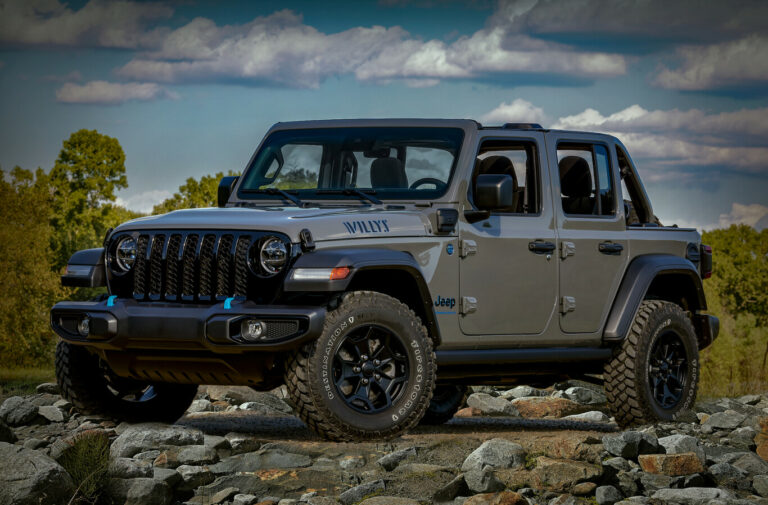1995 Jeep Cherokee Manual For Sale: Unearthing a Timeless Off-Road Icon
1995 Jeep Cherokee Manual For Sale: Unearthing a Timeless Off-Road Icon jeeps.truckstrend.com
In the vast landscape of automotive history, few vehicles command the enduring respect and fervent loyalty of the Jeep Cherokee XJ. And within that legendary lineage, the 1995 model year, particularly one equipped with a manual transmission, stands out as a true enthusiast’s dream. This isn’t just about a vehicle for sale; it’s about the opportunity to acquire a piece of utilitarian art, a rugged testament to simplicity and capability that continues to outperform many modern contenders off the beaten path.
The 1995 Jeep Cherokee XJ, with its iconic boxy silhouette, inline-six engine, and the highly coveted manual gearbox, represents a sweet spot for many. It’s old enough to be free of complex electronics and emission controls that plague newer vehicles, yet modern enough to offer a relatively comfortable and reliable driving experience. For those seeking a pure, unadulterated connection between driver and machine, especially for off-road adventures or as a robust daily driver that truly stands apart, a manual 1995 XJ Cherokee isn’t just a car; it’s an experience waiting to be claimed. This article serves as a comprehensive guide for anyone considering purchasing one of these increasingly rare and desirable machines.
1995 Jeep Cherokee Manual For Sale: Unearthing a Timeless Off-Road Icon
The Enduring Legacy of the XJ Cherokee: A Brief Overview
Introduced in 1984, the Jeep Cherokee (XJ) revolutionized the SUV market. It was one of the first vehicles to combine the off-road prowess of a traditional Jeep with the comfort and practicality of a station wagon, pioneering the compact SUV segment. Its unibody construction was a bold departure from traditional body-on-frame designs, contributing to a lighter, more agile, and surprisingly capable vehicle.
The 1995 model year falls squarely within the sweet spot of the XJ’s production run. It features the venerable 4.0-liter "High Output" (HO) inline-six engine, renowned for its bulletproof reliability, ample low-end torque, and ease of maintenance. Paired with a manual transmission, this engine comes alive, offering a level of control and engagement often missing in automatic counterparts. The XJ’s relatively compact size, excellent approach and departure angles, and robust four-wheel-drive systems (typically the Command-Trac NP231 part-time 4×4 or the Selec-Trac NP242 full-time 4×4) make it an off-road legend, capable of tackling trails far beyond its humble appearance suggests.
The Allure of the Manual Transmission XJ
While automatic XJs are far more common, the manual transmission variant holds a special place in the hearts of purists and off-road enthusiasts. The primary manual transmission offered in the 1995 XJ was the Aisin AX-15, a five-speed unit celebrated for its durability and relatively smooth shifting.
Why Choose a Manual XJ?
- Driver Engagement: A manual transmission provides a direct connection to the vehicle’s power delivery. You control the gears, the clutch, and ultimately, the vehicle’s response, leading to a more engaging and satisfying driving experience.
- Enhanced Control Off-Road: For technical off-roading, the ability to precisely select gears and use engine braking provides superior control, especially on steep descents or in challenging terrains.
- Simplicity and Reliability: Manual transmissions often have fewer complex components than automatics, potentially leading to fewer long-term issues if properly maintained. The AX-15 is known for its robustness.
- Cool Factor: Let’s face it, driving a classic SUV with a manual transmission is undeniably cool and increasingly rare, setting you apart from the crowd.
- Potential for Better Fuel Economy (Marginally): While not a massive difference, manual transmissions can sometimes offer slightly better fuel efficiency, depending on driving style.


What to Look For: A Comprehensive Buyer’s Guide
Acquiring a 1995 Jeep Cherokee with a manual transmission requires a meticulous inspection. These vehicles are nearly three decades old, and their condition can vary wildly. Practical advice here is paramount.
-
Rust, Rust, Rust: This is the single biggest killer of XJs.

- Unibody Frame Rails: Check the "frame" rails (they’re integrated into the unibody) under the driver and passenger doors, especially where they meet the front and rear suspension mounting points. Significant rust here is a deal-breaker as repairs are costly and complex.
- Rocker Panels: Inspect the rocker panels thoroughly. They are prone to rusting from the inside out.
- Floorboards: Look under the carpets for rust, particularly in the footwells.
- Rear Quarter Panels: Check behind the rear wheels.
- Doors and Tailgate: Inspect the bottoms of doors and around window seals.
- Underbody Components: Axle tubes, suspension mounts, and fuel tank skid plates can also show rust.
-
Engine Health (4.0L Inline-Six):
- Oil Leaks: Common areas include the rear main seal (a notorious XJ leak, not always critical if minor), oil filter adapter, and valve cover gasket. A minor weep is acceptable; a gushing leak is not.
- Cooling System: Inspect the radiator (plastic end tanks are common failure points), water pump, thermostat housing, and hoses for leaks or cracks. Overheating is detrimental to the 4.0L. Check the coolant color and clarity.
- Exhaust Manifold: Listen for ticking noises, which often indicate a cracked exhaust manifold – a common XJ issue, but repairable.
- General Running: Listen for unusual noises (knocking, ticking, excessive valvetrain noise), check for smooth idle, and ensure no excessive smoke from the exhaust (blue for oil, white for coolant).
-
Manual Transmission (AX-15) & Clutch:
- Shifting: Test all gears, including reverse. Shifting should be relatively smooth, though some notchiness is normal for older manual transmissions. Listen for grinding, especially when shifting into 1st, 2nd, or reverse.
- Clutch Feel: The clutch pedal should have consistent pressure and engage smoothly without slipping or excessive chatter. A high engagement point might indicate a worn clutch.
- Fluid Leaks: Check around the transmission and transfer case for fluid leaks.
- Transfer Case (NP231/NP242): Test 2WD, 4-High, and 4-Low. Ensure it engages smoothly without binding. Listen for grinding or clunking.
-
Suspension & Steering:
- Worn Components: Inspect tie rod ends, ball joints, control arm bushings, and leaf spring bushings for wear. Clunks or squeaks during the test drive are red flags.
- "Death Wobble": While more common in lifted XJs, check steering components for excessive play. Any shimmying or violent shaking at highway speeds is indicative of steering/suspension issues.
- Shock Absorbers: Look for leaks or excessive bounce during the test drive.
-
Electrical Systems:
- Test all lights (interior and exterior), power windows, door locks, windshield wipers, and the HVAC system (heater and A/C).
- Check dashboard gauges for proper function.
-
Interior Condition:
- Seats: Look for rips, tears, or excessive wear.
- Headliner: Sagging headliners are common; assess if it’s an easy fix or a major eyesore.
- Dashboard: Cracks are common, especially on the top.
-
Maintenance Records: Ask for any available maintenance history. A well-documented history is a strong indicator of a cared-for vehicle.
The Ownership Experience: Benefits and Challenges
Owning a 1995 manual XJ Cherokee is a unique journey with its own set of rewards and hurdles.
Benefits:
- Unparalleled Off-Road Capability: Stock or modified, the XJ is a legendary trail machine.
- Mechanical Simplicity: Easy to work on for the DIY mechanic, with abundant online resources and forum support.
- Vast Aftermarket Support: From lift kits to armor, nearly every component can be upgraded or replaced with aftermarket parts.
- Reliability: The 4.0L engine and AX-15 transmission are known for their longevity if properly maintained.
- Classic Appeal & Potential Appreciation: Well-preserved manual XJs are becoming collector’s items.
- Unique Driving Experience: The manual transmission makes every drive an event.
Challenges:
- Rust: As highlighted, it’s a constant battle, especially in salt-belt regions.
- Aging Components: Expect to replace wear-and-tear items like sensors, hoses, and bushings.
- Fuel Economy: The 4.0L is robust but thirsty, typically yielding 15-20 MPG.
- Safety Features: Lacks modern airbags, ABS (often), and stability control.
- Ride Comfort: Stiffer ride compared to modern SUVs, especially if lifted.
- Finding Parts: While many parts are available, some specific trim or interior pieces can be hard to source.
Tips for Prospective Buyers
- Get a Pre-Purchase Inspection (PPI): If possible, have a trusted mechanic (especially one familiar with Jeeps) inspect the vehicle before purchase. This is crucial.
- Test Drive Thoroughly: Don’t just drive around the block. Take it on highways, city streets, and if safe and legal, a mild unpaved road to test 4×4. Pay attention to steering, braking, and any unusual noises.
- Check for Modifications: Assess any lift kits, oversized tires, or engine mods. Are they professionally done? Poorly executed modifications can lead to more problems than they solve.
- Negotiate Based on Condition: Use any identified issues as leverage for price negotiation.
- Budget for Immediate Maintenance: Even a "good" XJ will likely need some immediate attention (fluids, tune-up, minor repairs) to ensure its longevity.
Price Guide: 1995 Jeep Cherokee Manual For Sale
Pricing for a 1995 Jeep Cherokee with a manual transmission can vary significantly based on location, mileage, overall condition, and modifications. This table provides a general range.
| Condition Category | Description




